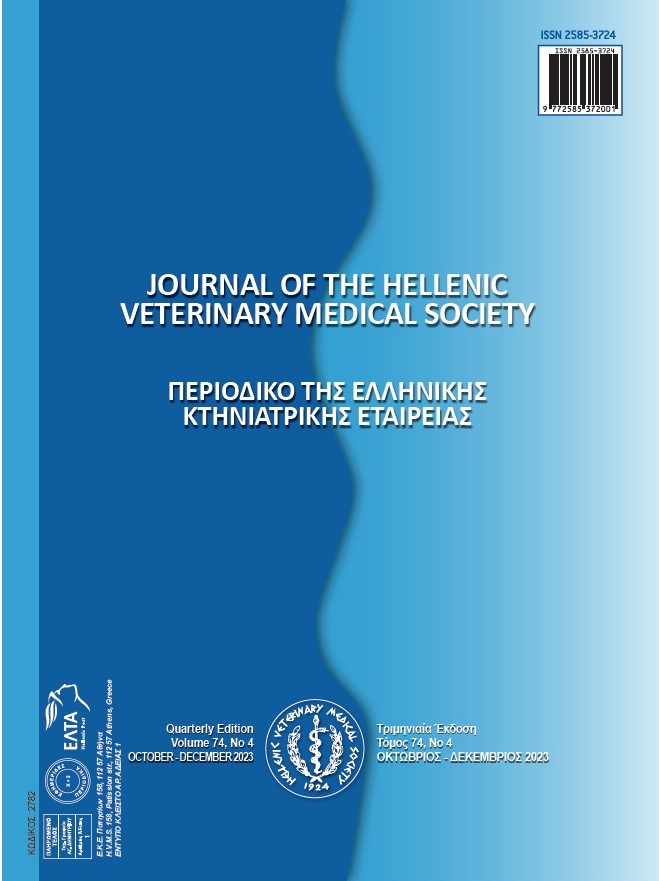Analysis of factors influencing the qualitative characteristics of equine synovial fluid
Résumé
The objective of the present study was to investigate the viscoelastic properties in synovial fluid between normal horses and horses with naturally occurring OA and to detect factors affecting synovial fluid viscosity. In total, 105 horses were included in this study. Synovial fluid samples were obtained from 60 mature horses with mild to moderate osteoarthritis in the 2nd interphalangeal, the metacarpophalangeal or the intercarpal joint. Forty-five horses were used as controls. Full rheological sample characterization was performed in order to measure the elastic G’ and viscous G’’ moduli. For determining hyaluronic acid concentrations a commercially available ELISA kit was used. The results of the linear mixed effect (LME) model revealed statistically significant (p < 0.001) effect of HA concentration, on the mean values of logG’ and logG” measurements. The ANOVA findings of the final model revealed statistically significant effect of joint type (p < 0.001) on the mean values of viscoelastic measurements. Interpreting the coefficients of the covariates osteoarthritis (p < 0.001) and age (p = 0.013), a negative correlation was detected on the response logG’ and logG” measurements. Geldings seemed to present lower viscous properties compared to mares. To the authors’ knowledge this is the first multivariate study to quantitatively evaluate the several factors that affect the viscoelastic properties of equine synovial fluid. Horses with osteoarthritis seemed to present lower viscoelastic properties compared to the healthy subjects that are joint type dependant. Finally, considering the multifactorial nature of osteoarthritis, one should expect an emerging need of personalized disease-modifying treatments.
Article Details
- Comment citer
-
TYRNENOPOULOU, P., DIAKAKIS, N., RIZOS, E., CHAINTOUTIS, S., PATSIKAS, M., PAPADOPOULOU, P., AGGELI, A., POLIZOPOULOU, Z., & PAPAZOGLOU, L. (2022). Analysis of factors influencing the qualitative characteristics of equine synovial fluid. Journal of the Hellenic Veterinary Medical Society, 72(4), 3503–3510. https://doi.org/10.12681/jhvms.29447
- Numéro
- Vol. 72 No 4 (2021)
- Rubrique
- Research Articles

Ce travail est disponible sous licence Creative Commons Attribution - Pas d’Utilisation Commerciale 4.0 International.
Authors who publish with this journal agree to the following terms:
· Authors retain copyright and grant the journal right of first publication with the work simultaneously licensed under a Creative Commons Attribution Non-Commercial License that allows others to share the work with an acknowledgement of the work's authorship and initial publication in this journal.
· Authors are able to enter into separate, additional contractual arrangements for the non-exclusive distribution of the journal's published version of the work (e.g. post it to an institutional repository or publish it in a book), with an acknowledgement of its initial publication in this journal.
· Authors are permitted and encouraged to post their work online (preferably in institutional repositories or on their website) prior to and during the submission process, as it can lead to productive exchanges, as well as earlier and greater citation of published work.













